Typewriter History
- 3 minutes read - 584 wordsI love typewriters. They’re amazing machines. They do something amazing (put letters together) in a consistent way (great for people with poor handwriting) and they’re shockingly simple to reason about. Make no doubt, typewriter repair technicians are a gifted sort of artisan that has been slowly disappearing from the world, but the idea that “it’s a piano, but for the alphabet” has a simple resonance that is oddly seductive.
Here’s my Underwood:
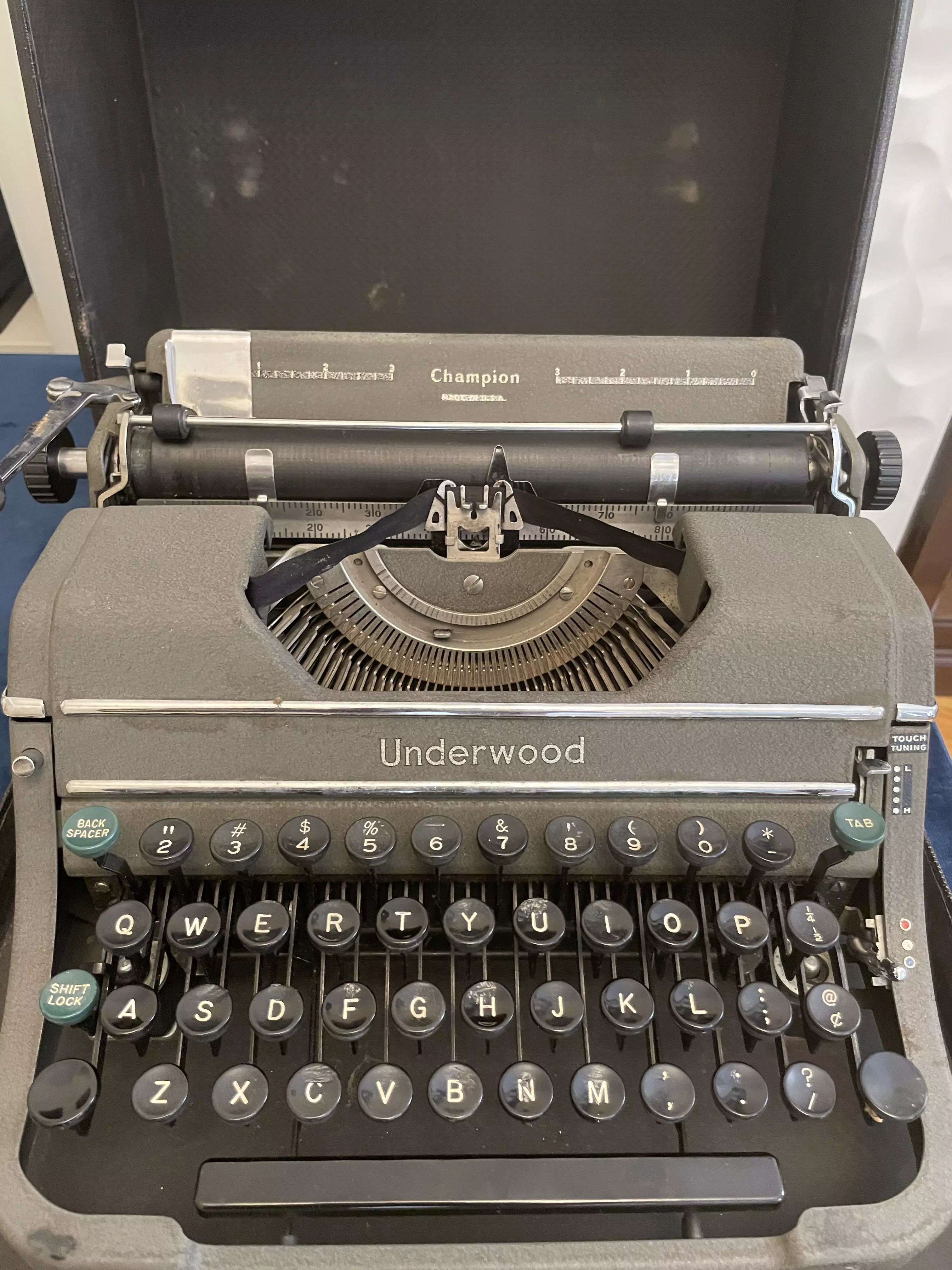
A heavy toy that’s in need of some repair…
My Introduction to Typewriters
Previously: In Memoriam Harold Harms
I suppose it all started early for me when my paternal grandfather gave me an Underwood that, I believe, my grandmother had found at a yardsale. My grandmother loved to visit garage- or yard-sales. I suppose she was always looking for a bargain, but I think she also had an anthropological interest in the effluvia on card tables: Who are these people, anyway? At any rate, sometime around 1983 I was given the Underwood and I clacked and banged on it as a toy for many years. Somewhere in history it was lost and, during the peak of the eBay era, I bought a replacement for it that I still have. I plan on taking it to a repair shop here in Manhattan now that the shop seems to be open again post-pandemic quarantine.
In any case, both the lost Underwood and my current Underwood are clunky, heavy devices.
But, like their musical cousins, typewriters were for most of their existence, effectively furniture, resident on desks or in offices. As early at 1892, patents were being issued for a portable typewriter models. Throughout the wars and the rise of the industrial age, multiple other “portable” typewriters came into existence, but they were still on the heavy end. I suppose I was thinking about how “a lighter, more fun, fashionable” typewriter might have been a time-period fellow-traveler for the “lighter, more versatile, solo woman wield-able” cameras (e.g. Leicas) that I saw in the “New Woman Behind the Camera” show.

Ad
Olivetti famously created a typewriter that was both light and fashion in 1969 when they shipped their gorgeous Valentine designed by Ettore Sotsass and Perry King. I love this device (as I’ve said before), and I did some examination of its presence in pop culture and how it tried to express a different idea of the relationship we could have with the device.
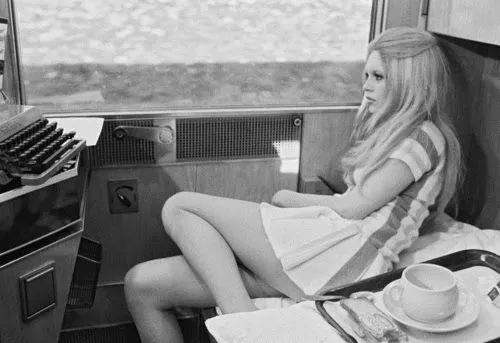
Bardot and her Valentine
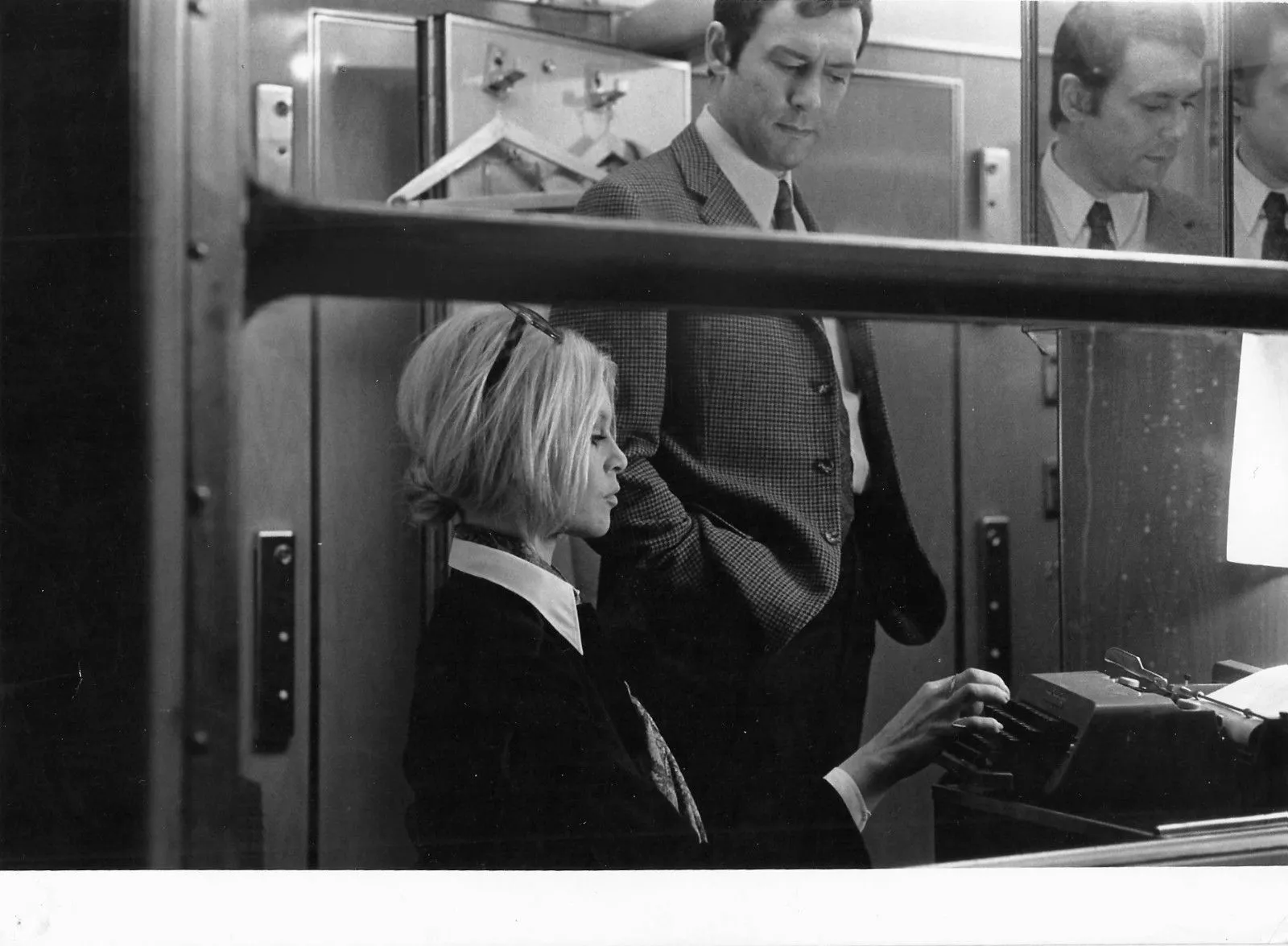
Brigitte has amazing typist posture. Someone must have wanted to make sure she had something to fall back on if that bombshell thing didn’t quite work out.
Said Sotsass of the Valentine, it was an “unpretentious toy…to keep amateur poets company on quiet Sundays in the country or to provide a highly colored object on a table in a studio apartment.”
Did it ever achieve that. Here it is in the bedroom of Alex, the protagonist of A Clockwork Orange:
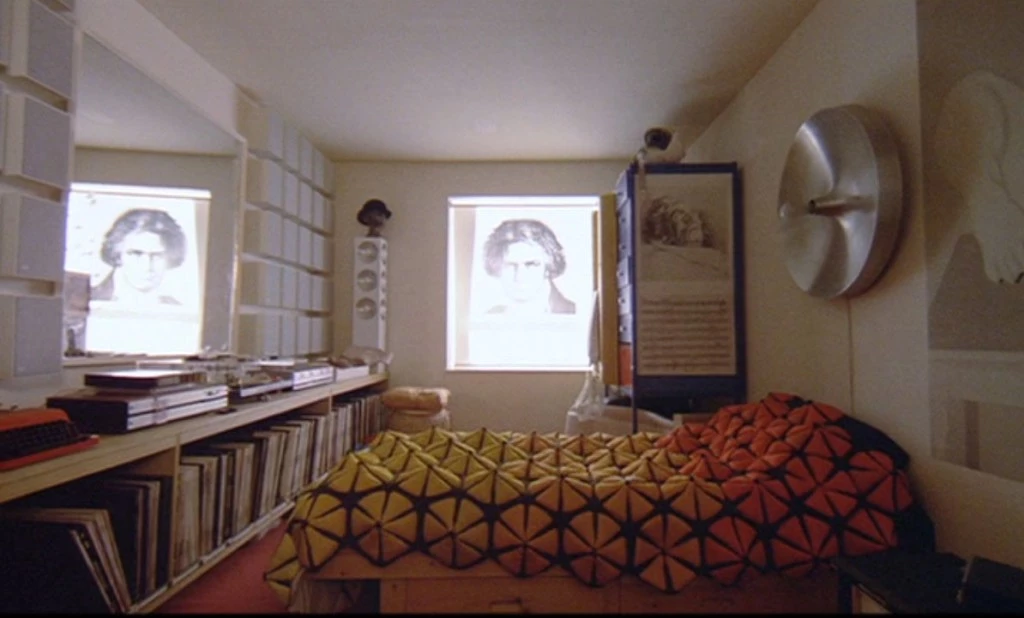
Our favorite droog always made time for the Ludwig Van and the ultra-typing. The amazing Film and Furniture blog does a furniture analysis on the DeLarge household
And here are Burton and Taylor at Heathrow with Valentine in tow:
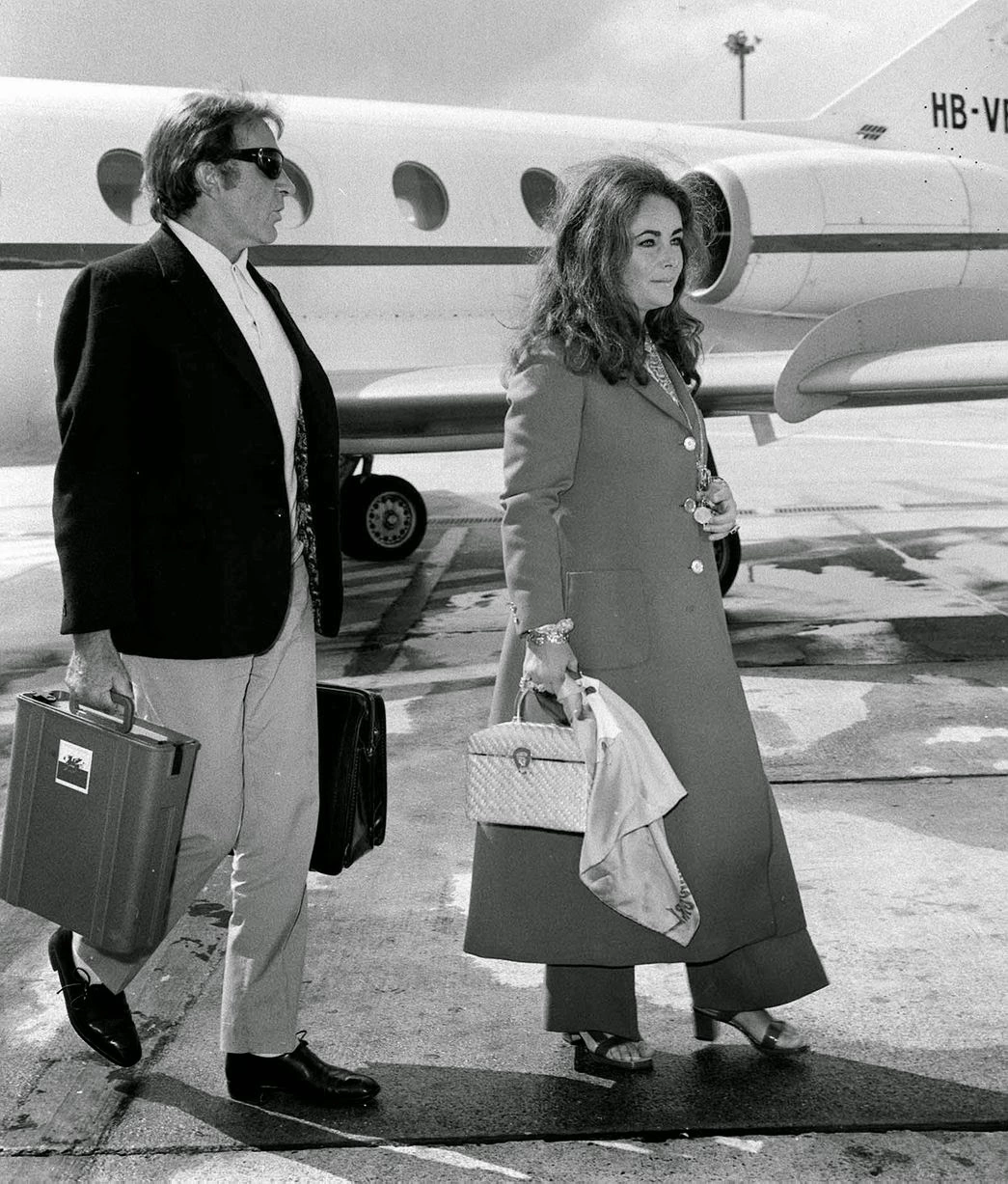
Burton and Taylor and Valentine
Thanks to the Typewriter Museum, one can see some of the other Valentine-adjacent portables. While portables neither started nor ended with the Valentine, it does seem to represent a giddy optimism about a future where a typewriter could be just a usable, cheap, and ubiquitous as the Bic Stic ball-point pen.